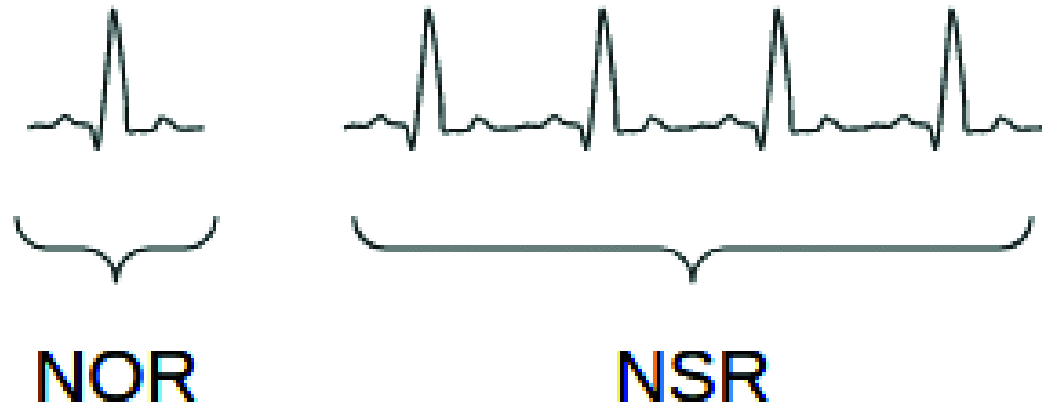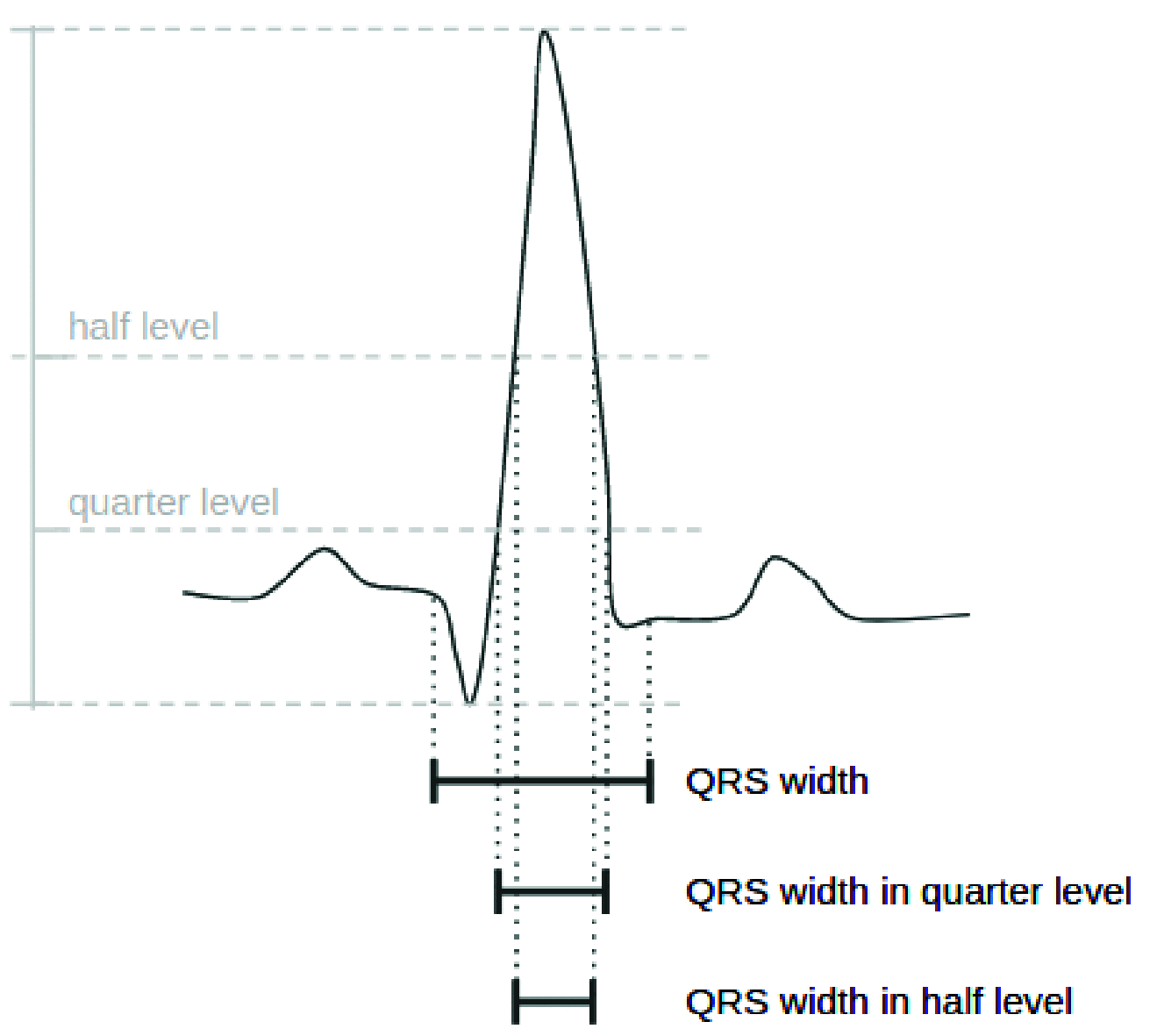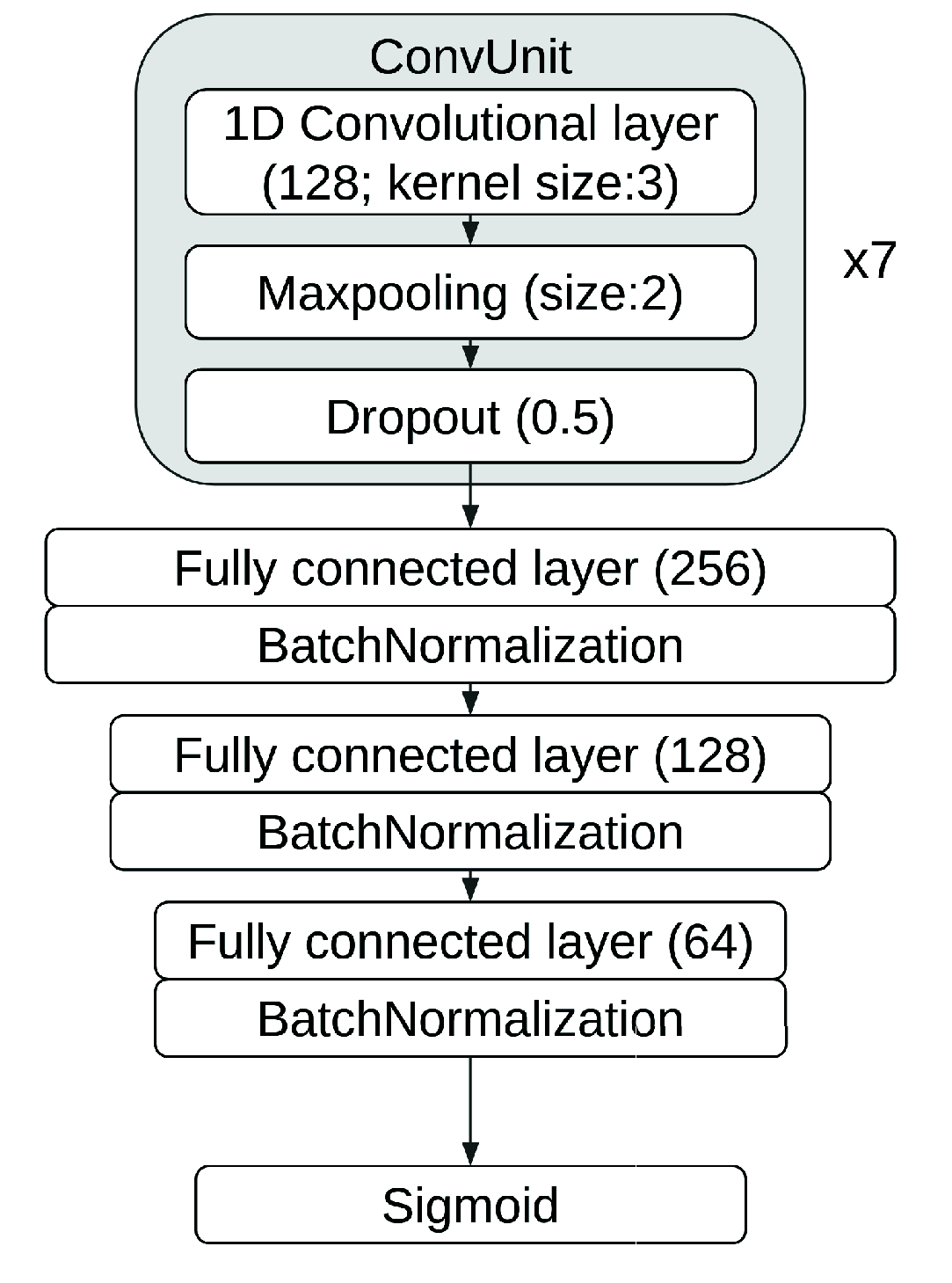Heartbeat Classification by Random Forest With a Novel Context Feature: A Segment Label
- PMID: 36105378
- PMCID: PMC9455809
- DOI: 10.1109/JTEHM.2022.3202749
Heartbeat Classification by Random Forest With a Novel Context Feature: A Segment Label
Abstract
Objective: Physicians use electrocardiograms (ECG) to diagnose cardiac abnormalities. Sometimes they need to take a deeper look at abnormal heartbeats to diagnose the patients more precisely. The objective of this research is to design a more accurate heartbeat classification algorithm to assist physicians in identifying specific types of the heartbeat.
Methods and procedures: In this paper, we propose a novel feature called a segment label, to improve the performance of a heartbeat classifier. This feature, provided by a Convolutional Neural Network, encodes the information surrounding the particular heartbeat. The random forest classifier is trained based on this new feature and other traditional features to classify the heartbeats.
Results: We validate our method on the MIT-BIH Arrhythmia dataset following the inter-patient evaluation paradigm. The proposed method is competitive with other similar works. It achieves an accuracy of 0.96, and F1-scores for normal beats, ventricular ectopic beats, and Supra-Ventricular Ectopic Beats (SVEB) of 0.98, 0.93, and 0.74, respectively. The precision and sensitivity for SVEB are 0.76 and 0.78, which outperforms the state-of-the-art methods.
Conclusion: This study demonstrates that the segment label can contribute to precisely classifying heartbeats, especially those that require rhythm information as context information (e.g. SVEB). Clinical impact: Using a medical devices embedding our algorithm could ease the physicians' processes of diagnosing cardiovascular diseases, especially for SVEB, in clinical implementation.
Keywords: Convolutional neural network; ECG classification; heartbeat classification; machine learning; mutual information random forest.
Figures






References
-
- Promoting Cardiovascular Health in the Developing World: A Critical Challenge to Achieve Global Health (EDS V Fuster, BB Kelly). Accessed: 2020. [Online]. Available: https://www.ncbi.nlm.nih.gov/books/NBK45688/ - PubMed
-
- Khan M. G., Rapid ECG Interpretation. Cham, Switzerland: Springer, 2008.
-
- Mondéjar-Guerra V., Novo J., Rouco J., Penedo M. G., and Ortega M., “Heartbeat classification fusing temporal and morphological information of ECGs via ensemble of classifiers,” Biomed. Signal Process. Control, vol. 47, pp. 41–48, Jan. 2019.
-
- Mykoliuk I., Jancarczyk D., Karpinski M., and Kifer V., “Machine learning methods in electrocardiography classification,” in Proc. CEUR Workshop, vol. 2300, 2018, pp. 102–105.
-
- Li T. and Zhou M., “ECG classification using wavelet packet entropy and random forests,” Entropy, vol. 18, no. 8, pp. 1–16, 2016.

